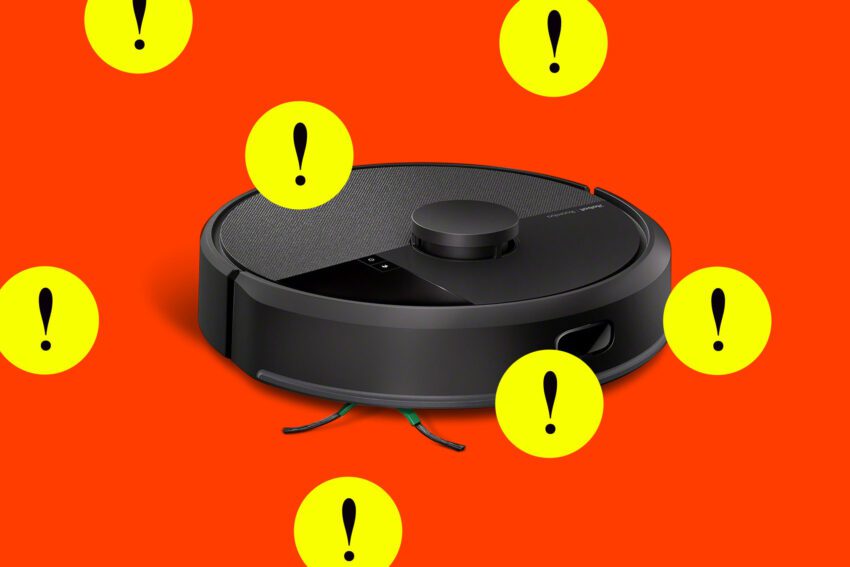
irobot s revenue has tanked and it iRobot, the pioneer in the robot vacuum market, is facing significant financial challenges as its revenue continues to decline sharply.
irobot s revenue has tanked and it
Current Financial Situation
iRobot’s third-quarter results, released last week, reveal a stark downturn in revenue, which has fallen “well below our internal expectations due to continuing market headwinds, ongoing production delays, and unforeseen shipping disruptions,” according to Gary Cohen, iRobot’s CEO, in a press release. This financial strain has forced the company to expend more cash than anticipated, leaving it with under $25 million in reserves. Cohen further stated, “At this time, the Company has no sources upon which it can draw for additional capital.”
This precarious financial position raises concerns about the company’s future viability and its ability to sustain operations. The situation is particularly alarming given the competitive landscape of the robot vacuum industry, which has seen a surge in competitors, particularly from Chinese manufacturers. The once-dominant player in the market is now struggling to maintain its foothold.
Background and Challenges
iRobot has been grappling with various challenges over the past few years. The company’s difficulties were exacerbated by a failed acquisition attempt by Amazon in 2022, which was thwarted by regulatory scrutiny. This setback not only left iRobot without a potential lifeline but also contributed to a series of tumultuous changes within the organization. The fallout from the failed deal resulted in significant layoffs, with over 30 percent of the workforce being let go. Additionally, the company lost its founder and long-time CEO, Colin Angle, further destabilizing its leadership structure.
As iRobot navigated these turbulent waters, it also found itself burdened with substantial debt, making it increasingly difficult to invest in innovation and marketing. The company’s attempts to revitalize its product line have been met with mixed results, as it struggles to compete against a growing number of rivals.
New Product Launches
In an effort to regain market share, iRobot launched an entirely new line of robot vacuums this year. This new product line aims to better compete with companies like Roborock, Ecovacs, and Dreame, which have been gaining traction in the market. One of the most notable changes in the new models is the introduction of lidar navigation technology, a significant upgrade from the previously used VSLAM (Visual Simultaneous Localization and Mapping) technology. This shift not only enhances the navigation capabilities of the vacuums but also aligns iRobot’s offerings more closely with those of its competitors.
The new models also feature a design that diverges significantly from the classic Roomba aesthetic, making them look more like their competitors. This change reflects a strategic pivot aimed at appealing to a broader consumer base. Additionally, the new vacuums utilize a different app that, while offering fewer features than its predecessor, introduces new hardware capabilities, such as spinning mop pads and a roller mop, which were previously absent from iRobot’s lineup.
Concerns Over Future Viability
Despite these efforts to innovate, the company’s financial instability has raised alarms about its future. In a regulatory filing earlier this month, iRobot warned that it may be forced to seek bankruptcy protection if it cannot secure additional funding or if negotiations with potential buyers break down. This revelation has left Roomba customers understandably anxious about the implications of the company’s financial troubles on their home cleaning robots.
Customer Concerns
The uncertainty surrounding iRobot’s financial health has led many customers to question what would happen to their Roombas if the company were to go out of business. The Verge reached out to iRobot for clarification on this matter and received a response from Michèle Szynal, senior director of corporate communications at iRobot. Szynal stated, “Consistent with our policy, we do not comment on matters of this nature beyond our public disclosures.” However, she did mention that the company has reached an agreement with its primary lender to extend its covenant waiver under its loan agreement through December 1, 2025. This extension is intended to allow iRobot to continue its active review of strategic alternatives, which may include exploring potential sales or refinancing its debt.
As the holiday season approaches, Szynal emphasized that iRobot remains focused on executing its strategy and delivering for its customers, partners, and consumers. However, the ongoing financial turmoil casts a shadow over these assurances.
Comparative Industry Landscape
The challenges faced by iRobot are not unique to the company; the robot vacuum industry as a whole is experiencing significant shifts. For instance, Neato, another American robot vacuum manufacturer, shut down in 2023 and subsequently pulled the plug on its cloud services. This decision left Neato vacuum owners unable to communicate with their devices through the Neato app. While the vacuums can still be controlled manually, the loss of cloud connectivity illustrates the risks associated with relying on internet-based services for functionality.
Should iRobot face a similar fate and its cloud services shut down, most Roombas would likely still operate in offline mode. Users would still be able to start, stop, and dock their robots by pressing physical buttons. However, the loss of app connectivity would mean that features such as scheduling, specific room cleaning, and voice command functionalities would be rendered inoperable. This potential scenario underscores the broader concern that cloud-connected devices should enhance user experience rather than become entirely dependent on connectivity.
Future Outlook
The outlook for iRobot remains uncertain as it grapples with financial instability and increased competition. The company’s efforts to innovate with new products and features are commendable, but they may not be sufficient to turn the tide in its favor. The competitive landscape is rapidly evolving, and consumers have a plethora of options to choose from, making it imperative for iRobot to not only stabilize its finances but also to regain consumer trust and market share.
As the company navigates these challenges, it will need to consider strategic partnerships, potential acquisitions, or even a complete overhaul of its business model to remain relevant in the industry. The failure to secure additional funding or a strategic buyer could lead to dire consequences, including bankruptcy, which would not only affect the company but also its loyal customer base.
Conclusion
In summary, iRobot is at a critical juncture in its history. The company’s financial struggles, coupled with fierce competition and a rapidly changing market, present significant challenges that it must address to survive. As customers await clarity on the future of their Roombas, the broader implications of iRobot’s situation serve as a cautionary tale about the vulnerabilities of even the most established players in the tech industry.
Source: Original report
Was this helpful?
Last Modified: November 10, 2025 at 10:39 pm
2 views















